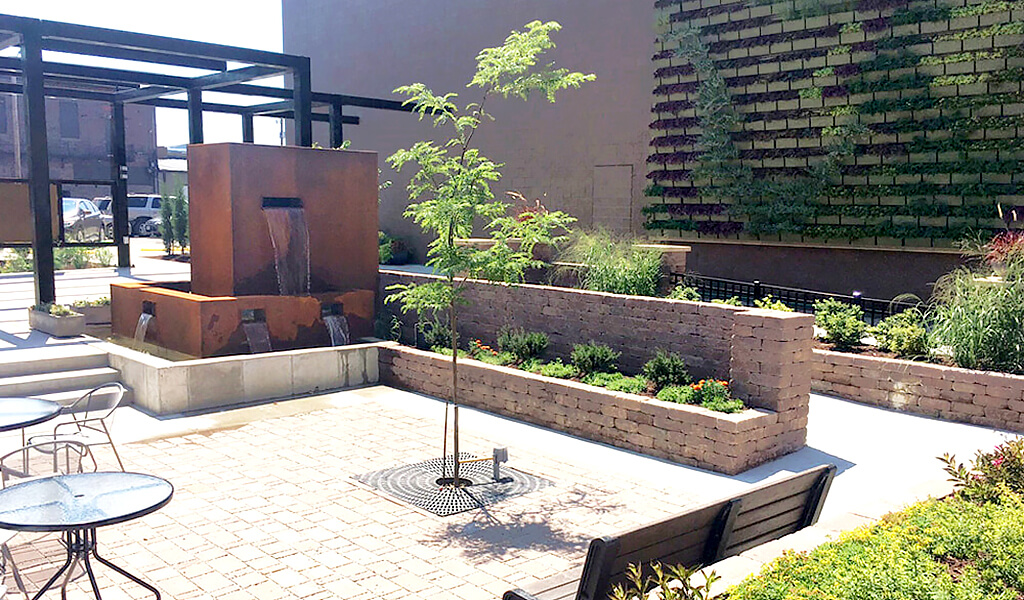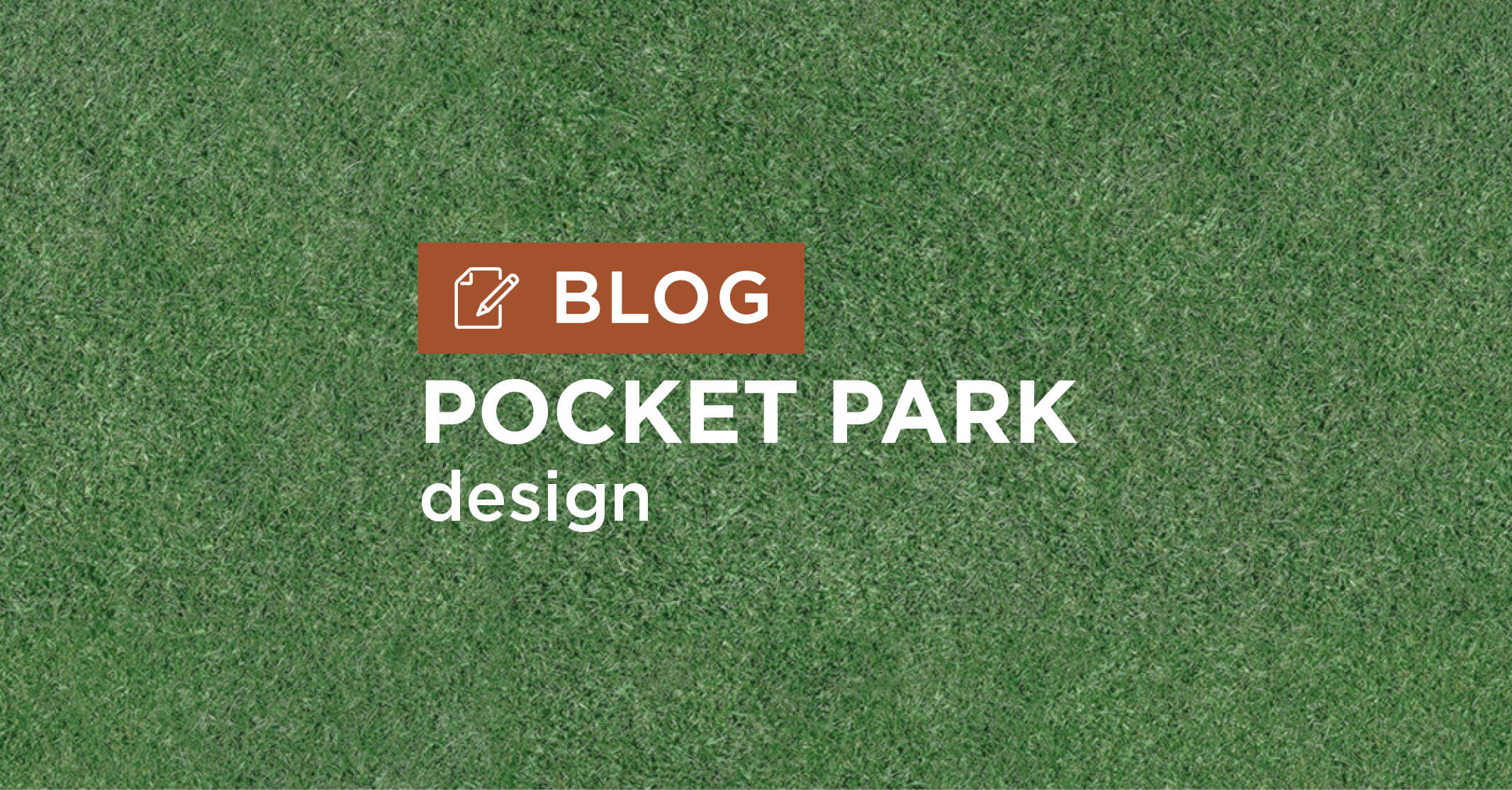Advantages of Green Space in an Urban Environment
In many urban communities, commercial and residential structures typically dominate the landscape, whereas green space for parks and other recreational amenities is often at a premium. As a result, workers and residents in the immediate area have few places to gather, relax, or enjoy the outdoors. At the same time, urban youth’s physical and recreational needs also suffer. To help fill this “green” void, communities increasingly want to convert abandoned and unused areas into usable spaces.
Pocket parks are small outdoor spaces, usually no more than a quarter of an acre in size, that provide a quiet oasis for lunchtime workers or a pint-sized play area for children. These unique parks often utilize vacant lots, abandoned alleyways, and other forgotten and unused spaces. To avoid tax liabilities on unused or unneeded property, landowners and developers sometimes donate small parcels of land to municipalities or organizations with an understanding of using the area to create a public space.
Expert Planning and Experience are Crucial for Successful Pocket Park Designs
Designers have an extensive toolbox of features and elements to incorporate into a pocket park design. These can include hard surfaces like paver walkways or simple concrete pathways to moveable furniture items like benches and tables. In some urban settings, water features are popular and are often used to dampen the noise of the surrounding city. Potted displays of annual plants are easy to maintain and change out for seasonal decorating. The creative options are nearly limitless and can be as simple or elaborate as necessary, with many incorporating “green” components.
The design team with Snyder & Associates has been instrumental in creating several parks. Our team fully understands the critical characteristics of a successful pocket park design.
- Foremost, these spaces must be accessible. Designers often achieve this through the elements they incorporate into the park.
- In the same vein, pocket parks also must be located in comfortable spots with a positive image that encourages people to meet, gather, and bring visitors.
- Finally, they should provide enough space for people to engage in small groups or individual activities.
Designing Pocket Parks for Distinctive User Groups
A critical distinction is that pocket parks shouldn’t strive to provide the same amenities as a much larger neighborhood or community park. Ideally, pocket parks should be designed with the needs of the nearby individuals and the interests of the local community at the forefront. This difference often leads community groups or private organizations to spearhead these projects or provide funding (or a combination of both) to add green space to a specific neighborhood. Snyder & Associates can provide a guide in identifying what amenities might be the most useful for each park to meet the needs of the targeted community, and we can help develop an implementation strategy to bring the concept to life.
Explore the Gallery Garden Pocket Park Case Study

Gallery Garden Park
Photo Credit: Marshalltown Convention & Visitors Bureau
The Gallery Garden Park in Marshalltown, Iowa, best shows a chief example of our work developing a pocket park design. Located just down the block from the iconic Orpheum Theater, this park was built on a former historic building destroyed in a fire. Under new ownership, the vacant lot was considered the prime location for creating a public-use mini-park.
Snyder & Associates was brought on board for this ambitious civil engineering and landscape architecture project. This elaborate space features tables and seating, a sunken plaza with an evaporation pool, and an elevated water fountain for noise masking. Elevated planters around the perimeter ring a vertical Live Wall garden, and a large steel pergola creates a shady space for relaxing. Our professional landscape architect, Tim West, PLA, points out this park also provided the opportunity to include “green” elements in the design and address stormwater issues that had plagued the area.
“This project is very unique,” said West. “Rainwater is captured from the roof of the adjacent building, then stored in harvesting tanks that were buried on-site, then this water is pumped to service the central water fountain and irrigation of the Live Wall and landscape plantings. A water line is not part of the improvements, meaning all the water for the site comes from captured stormwater.” The further addition of permeable pavers and a bio-swale rain garden with native Iowa plantings also promote water infiltration.
West further identifies other sustainable features. “The pergola supports solar panels, which provide shade for the patio and electricity for the central water fountain and lighting of the pocket park.” Producing roughly 7,000 watts of electricity, the 32 photovoltaic panels result in the park having a net-zero impact.
The green infrastructure elements in our park master plan also resulted in the project receiving a grant. “The grant was secured from the Iowa Economic Development Authority,” said West. “The owner also paid to cover the cost, while the City of Marshalltown also participated, assisting with costs associated with storm sewer improvements in the parking lot.”
The Gallery Garden Park has proven to be an invaluable addition to the Marshalltown community. It provides a relaxing place for downtown shoppers to rest their weary feet, while local workers can take advantage of the serene space during a busy day to enjoy a quiet lunch. This beautiful mini-park has been incorporated into many community events and even exhibits public art displays throughout the year.
“This pocket park is privately-owned but available to the public,” said West. “The owners are very committed to downtown viability and the community and are extremely excited about how the community has embraced this project and space. There will be more opportunities to recreate public space in downtown areas. This project exemplifies how a successfully designed space can be an attraction and bring people together.”
The engineering team and landscape architects at Snyder & Associates pride themselves on leading the way with innovative and unique design concepts. The pocket park is just one more way we can bring projects to life that improve the environment for our communities. Contact our experts today if you’d like industry-leading guidance for your next park project — big or small.
